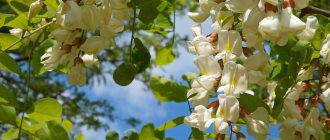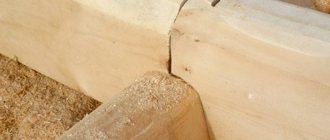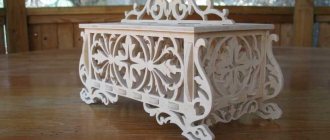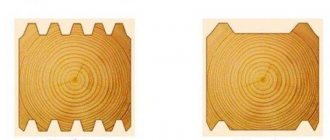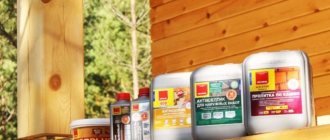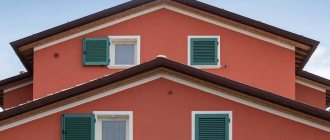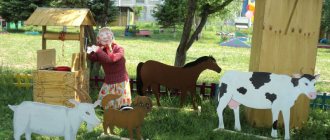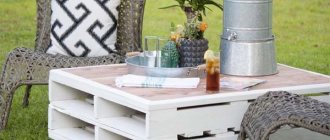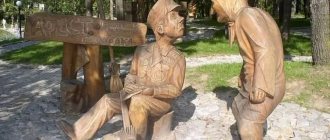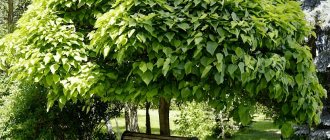Fashion affects all areas of human life. Following its trends, modern people dress, choose accessories and fragrances, make renovations and purchase interior items that are popular this season.
From time to time, the fashion for garden furniture changes. Today, forged garden furniture is at the peak of popularity, and tomorrow – elegant wicker rattan. Strict classical proportions are becoming a thing of the past; the demand for high-tech products is rapidly increasing, which in turn are being replaced by country-style garden and leisure furniture. Fashion is changing not only in styles and trends, but also in the color scheme and even the type of wood from which garden furniture is made.
Teak is very prestigious and popular in Russia today. If you believe the advertising, there is simply no better material for making country furniture than this material. In terms of price, teak products belong to the most expensive category of furniture. To determine whether such a high cost is justified or is it just a tribute to fashion, let’s compare teak with a more affordable wood option that grows in our region - acacia.
Physical and mechanical properties
The physical and mechanical properties of wood are density, strength, hardness and impact strength.
Teak is a high density species. When dried, its density is 640 kg/m³. The density of acacia is higher than that of teak; in dry form it reaches 750 kg/m³. The density of wood affects its weight, strength and workability.
Strength shows how much a material can withstand applied loads. Important indicators are flexural and compressive strength. For teak their values are respectively 85 MPa and 65 MPa. The strength of acacia is much higher: bending – 145 MPa, compression – 71 MPa.
Hardness characterizes the ability of a material to resist penetration of solids. This indicator is paramount for determining the workability of a material: the higher it is, the more difficult it is to mill and saw the material. At the same time, hard materials are less susceptible to abrasion. Both acacia and teak belong to the hardwood class. For teak, Brinell hardness is 30-35 N/mm², and for acacia – 40 N/mm².
Impact strength determines how much load must be applied to a material to break it. The higher it is, the less the surface of wooden garden furniture will contain dents and scratches. And according to this indicator, teak is inferior to acacia.
Medicinal properties and contraindications of acacia
Few people know that a tree with a pleasant smell during the flowering period, called acacia, has a number of medicinal properties. The bark, fruits, flowers and leaves of the tree are used as raw materials for the manufacture of medicines. Flowers are collected during flowering, when the buds are not yet completely open. Dry them, turning them over from time to time, in a well-ventilated room without foreign odors.
Useful medicinal properties of acacia
Acacia has a healing effect for many diseases, among them radiculitis, rheumatism, and nervous system disorders. Medicines based on acacia have an antispasmodic effect, perfectly relieve fever, and remove excess fluid from the body. Widely used, like tansy, for stomach ulcers and gastritis. Acacia is also included in homeopathic preparations and reduces nitrogen levels in the blood.
Since the composition of acacia has not yet been fully studied, new uses of this useful tree in medicine appear every year.
The use of acacia for medicinal purposes
In gynecology, the following decoction is used to treat various inflammations: take a large spoonful of dried inflorescences into two glasses of purified water, and after boiling, keep it on the fire for two minutes. After pumping, bring the volume to the original volume. Before meals, drink one dessert spoon of the resulting liquid no more than 4 times a day.
A tincture for the treatment of infertility is prepared in this way: for 300 grams of vodka, take one large spoon of flowers, mix and place in a sunny place, where it is kept for two weeks. After straining, the tincture is ready for use. It cannot be taken undiluted; it must be mixed a little with water and taken three times a day.
Also in gynecology, douching with a decoction of flowers is used to get rid of erosion and inflammatory processes. To do this, boil acacia flowers for three minutes (take half a liter of water per spoon), filter thoroughly, cool to a pleasant warm state and douche. The procedure is done once at night for ten days, without missing a single day, otherwise there will be no effect from the treatment.
This ordinary tincture can relieve toothache. Pour one glass of water brought to a boil over a spoonful of flowers and cover tightly with a lid. When the tincture is warm, you can rinse your teeth with it.
To treat gastritis and stomach ulcers, a decoction of tree bark is prepared. Take half a liter of water for one dessert spoon. First, boil for at least 20 minutes, after straining, boil again until the volume is the original. The resulting decoction is divided into two days and drunk in equal portions.
For severe coughs, brew a small amount of dried flowers, bring to a boil and keep on the fire for a little longer. Drink every day for a month, even if the cough has passed, 2 small spoons before meals.
Acacia contraindications
If improperly prepared or taken in large doses, the plant can be poisonous. Therefore, medications should be prepared according to the prescription and used with caution. At the slightest side effects, taking medications with acacia should be stopped immediately. Drug poisoning is accompanied by headache, severe nausea, drowsiness and vomiting. For abdominal pain and cramps, you must provide first aid and call a doctor. The particular danger lies in the bark.
Treatment with acacia is contraindicated for gastritis, pregnancy, breastfeeding and individual intolerance.
You should be careful when collecting raw materials for making medicines; side effects may appear even at this stage.
Technological characteristics
The main technological characteristic is the workability of the material. Since both woods are hardwoods with a high impact strength, both teak and acacia are quite difficult to process. In this regard, acacia is even more difficult than teak, since in a dried state it is very difficult to process it manually, and on machines it is necessary to reduce the longitudinal feed of the tool and work at high spindle speeds, while carefully monitoring the condition of the tool, which wears out quickly and requires frequent replacement. Therefore, the production of garden furniture from acacia is a long and labor-intensive process. At the same time, acacia can be ground and polished well, acquiring high surface quality.
Teak is easier to process. It saws, mills and sands well, and is moderately polished. The surface quality of solid teak furniture is very good due to the high content of elastic and oily substances.
An important indicator is the drying of the wood. To prevent teak from warping or cracking in the future, it must be properly dried. The ideal option is natural drying for 2 years. In the case of chamber or oven drying, teak must first be ringed (that is, the bark 1.5-2 cm thick is removed from a living tree in a continuous ring), after which it dies and can be dried using artificial methods.
Acacia is steamed for 5 days before drying. After which the wood is dried naturally (5-6 weeks) or in special chambers.
Both acacia and teak bend, glue and varnish quite well.
Characteristics of white acacia wood
A feature of acacia is its very rapid growth. It can grow up to 27 years at 4 meters per year. However, due to this, it ages very quickly compared to other types of wood. After 30 years, it begins to collapse, cracks appear in the bark, and hollows appear in the trunks. The crown of white locust has less foliage.
The trunk of white acacia reaches 1.5 meters in diameter. Due to the height and width, a lot of useful material is obtained from wood. The tree has a complex and at the same time powerful root system.
Performance characteristics
Since we are talking about garden furniture, it is important how the material is preserved under conditions of temperature changes, under the influence of the sun, high air humidity, and precipitation.
Teak is a type of wood that is used for shipbuilding. That is, even with constant exposure to water, it does not rot. Withstands significant temperature changes.
Almost the same can be said about acacia. Properly dried, high-quality wood does not crack or warp. Acacia does not rot or become moldy when exposed to moisture, so it is quite suitable for outdoor use. It tolerates winter frosts well. Wooden gazebos are built from it and furniture is made that is not brought into the house when cold weather sets in.
Minuses
Acacia is a short tree, so the length of a board made from it usually does not exceed 1.2 meters. Typically, solid acacia boards are no longer than a meter, since this wood often contains knots and other unacceptable defects. If you need long boards, look towards parquet made from other types.
If you like an even shade of the floor, without variegation or contrasts, acacia parquet is not for you.
Acacia flooring is very stable, but as with exotic woods, you need to maintain a stable level of humidity during the heating season to prevent the boards from drying out and warping.
Aesthetic indicators
It’s hard to say which is more beautiful: acacia or teak - both woods are beautiful in their own way. Most often, solid garden furniture is made of white acacia, which has a light golden hue.
But they also use silver (greenish-yellow) and pink acacia. The texture of the wood is clearly defined with a beautiful pattern of annual layers, large vessels and medullary rays. When exposed to direct sunlight, acacia may darken, but the pattern appears even more clearly, so the aesthetic qualities are not lost.
Teak wood is typically golden brown with rich silver-gray to black stripes, and the heartwood may have a greenish tint. The drawing immediately after processing is quite clear and very beautiful, but over time it smoothes out and becomes uniform and almost invisible. Teak products, when used outdoors, over time can acquire a grayish-gray color, which not everyone likes.
Appearance
Acacia parquet is extremely beautiful. The texture of wood has a wide variety of shades - from sunny yellow to deep brown. The fiber pattern is dynamic, the overall color scheme is warm.
Due to the expressive texture of the fibers and knots, acacia parquet looks stylish and cannot go unnoticed. Interior designers love to include acacia flooring in their projects, especially those that need to create a focal point with natural wood floors.
An acacia floor looks and feels exotic, and over time this impression only intensifies.
Acacia parquet in the interior
conclusions
Comparing the above indicators, it becomes obvious that acacia is not inferior to teak, and in some ways even surpasses it. The cost of teak is higher, since it does not grow in our region, but is imported from warm tropical countries and is a valuable tree species, but the cost of furniture production is much lower than in Europe. Its unique properties include high fire resistance and the fact that it is the only species that is not eaten by termites. But you're not going to set fire to a bench or table, are you? And there are not too many termites in our country.
Before you buy garden furniture made of solid teak, having overpaid a considerable amount for it, think about whether it is worth it. It is not without reason that the famous German satirist G. Lichtenberg noted that “most people live by fashion, not by reason.”
Unusual wood for crafts. Part 1.
I have long wanted to try wood from the desert landscapes of Central Asia: saxaul, sand acacia, kandym (juzgun), tamarix (comber).
Having previously rummaged through reference books and the Internet, I collected some information. Unfortunately, it turned out to be meager and contradictory. And so, planning my next trip through the Kyzylkum desert in Uzbekistan at the end of May 2011, I decided to check everything myself.
A few words about desert vegetation.
In the photo: a typical desert landscape with typical vegetation (sand acacia, kandym, saxaul).
Almost all woody vegetation of deserts has a shrub form. With the possible exception of black saxaul (Haloxylon aphyllum), which occurs in the form of trees with trunks up to 20 or more centimeters in diameter and several meters in height. Other species often have trunks 5-7 cm thick. (Although I have encountered tamarisk bushes near salt lakes and wells with trunks up to 15 cm.)
Unfortunately, most desert plants have strongly curved trunks of variable thickness, which complicates the selection of raw materials for sawing. But the desire was great and therefore for a week-long trip the necessary material in the form of dry lumps was approx. 25-30 cm long and 5-8 cm in diameter were collected.
For my band saw, logs with a diameter of up to 10 cm (clearance 80 mm) are optimal, and therefore I focus on this thickness.
And now I will share my observations.
1. White saxaul. The existing information that the wood of this plant is only suitable for fuel was fully confirmed. Indeed, a test cut of the trunk with an ax, although it gives a rather beautiful cut, but the shavings (quite thick) crumble in your hands into “sawdust” along the fibers.
For all its extraordinary density, compressive strength and relatively beautiful wood (light, dense with yellowish “risks”), it is completely unsuitable for processing and use in the form of lumber. Even for my miniatures.
2. Sand acacia. Several species of the genus Ammodendron. (I don’t distinguish them and don’t know what type I sawed.)
The wood is heavy, durable, very dark (brown-greenish). The autopsy revealed the amazing texture and beauty of the material. Perfectly polished and impregnated with wax (oil).
An excellent material for small crafts and for details of wooden compositions. It competes in beauty with walnut, but due to the smaller thickness of the branches, the annual rings are thinner and, accordingly, the “agate” of the wood is more pronounced.
The disadvantage is the curvature of the trunks and small thickness. There is also severe thorniness and injury when extracting dead branches in nature.
3. Tamarix - a shrub often found in Wed. Asia near rivers, reservoirs, salt marshes and other damp places.
So far I have cut one piece of wood with a diameter of approx. 6 cm. The wood is heavy, durable, light. Virtually no sapwood. Clear pink color. Polishes perfectly. It soaks in well. See the photo for the view.
The reference books say that trunks can be up to 15 cm thick or more.
An excellent material for small crafts and for details of wood compositions (inlay, mosaic). The texture and fibers are a bit like sycamore. The question of the durability of the pink color is open. I placed a piece of wood on a brightly lit windowsill. We'll see in six months or a year...
Waiting to be sawed: kandym and almonds. I'll try to prepare a report on my impressions.
Source
